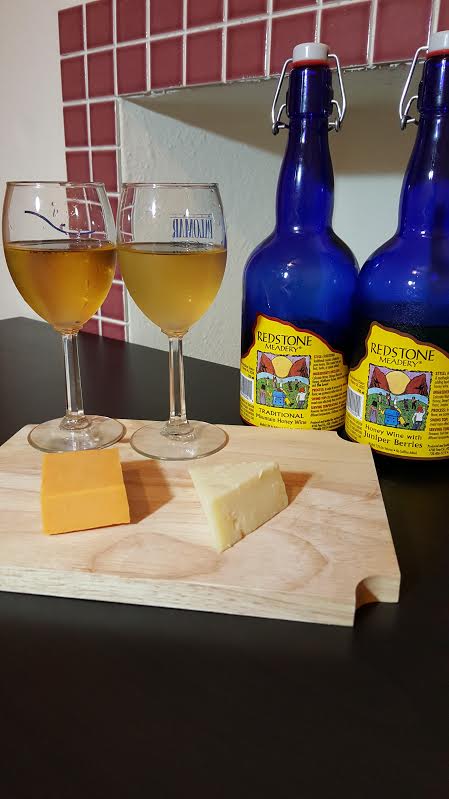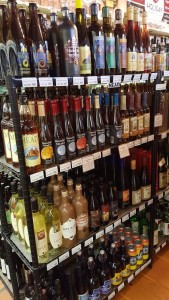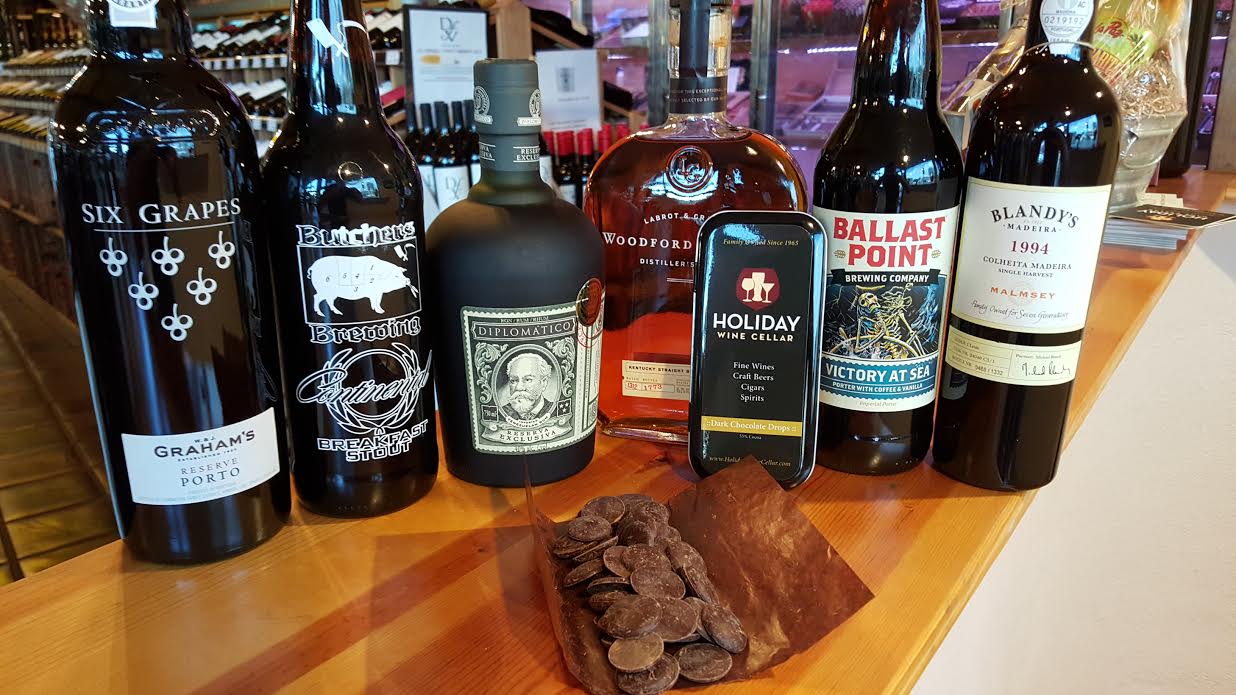Mead is a very little known beverage of ancient origins. For those uninformed, mead is a beverage made of fermented honey and water, which has had a presence in Scandinavian culture for millennia.
Flavors in mead can vary greatly. The flavor is dependent on the type of honey used, if fruit or spices are added, and the degree to which the mead is fermented. Mead’s residual sugar content can vary; some are sweet, some are dry, and many fall somewhere in between this spectrum.
These particular meads from Redstone Meadery fall in the middle of the spectrum of residual sugar content, and make for some great cheese pairings. Here are the two that were paired with cheese:
- Redstone Meadery Honey Wine with Juniper Berries: Orange blossom and desert blossom honey combine with juniper berries to create a slightly woody, botanical flavor with an apparent sweetness throughout.
- Redstone Meadery Traditional Mountain Honey Wine: A combination consisting mainly of orange blossom honey with a small portion of wildflower honey help to make up a medium-sweet flavor profile of citrus and floral notes, abundant acidity, and honeycomb.
Cheeses paired include:
- Asiago/Parmesan blend: Earthy, mild, and approachable. This is a great cheese for the cheese novice, or just for someone who is not into the stinky cheeses
- Kerrygold Dubliner: A cow’s milk cheese akin to sharp cheddar, with a nutty, rich, and slightly sweet flavor profile.
Overall, these cheeses worked well with the meads that they were paired with, but some pairings were better than others. The asiago and parmesan blend made the Juniper Mead sweeter, sharper, and more acidic, while bringing out the florality of the mead. While the Juniper Mead became sweeter with the asiago blend, the Traditional Mead became drier.
The cheese has somewhat of an anchoring effect in this case, bringing the two meads closer together in their level of sweetness. While the sweeter mead (Traditional) was rendered drier tasting by the asiago blend, just the opposite happened in the case of the drier mead (Juniper), which tasted sweeter when paired with the cheese. Both meads met right in the middle when paired with the Asiago/Parmesan blend cheese.
When paired with the Juniper Mead, rich, broth-like flavors were brought out in the Dubliner, while the mead took on a bit more sweetness, with a fruity flavor of mango and honeydew melon, and a hint of petrol akin to a German Riesling wine.
The Traditional Mead also made for a nice pairing with the Dubliner, retaining more of its sweetness and original flavor, and taking on a bit more complexity. This was highlighted by a new wave of flavors including green apple, spice, and a bit more tartness.
The big takeaway from this pairing is that if you are looking for an interesting dessert and don’t want to go with something too sweet or run of the mill, a mead and cheese pairing is a surefire way to add a unique experience to the end of your meal. Mead seems to be quite versatile, as both of these paired nicely with the cheese. Try pairing at your next dinner party, and let us know how you fared!









